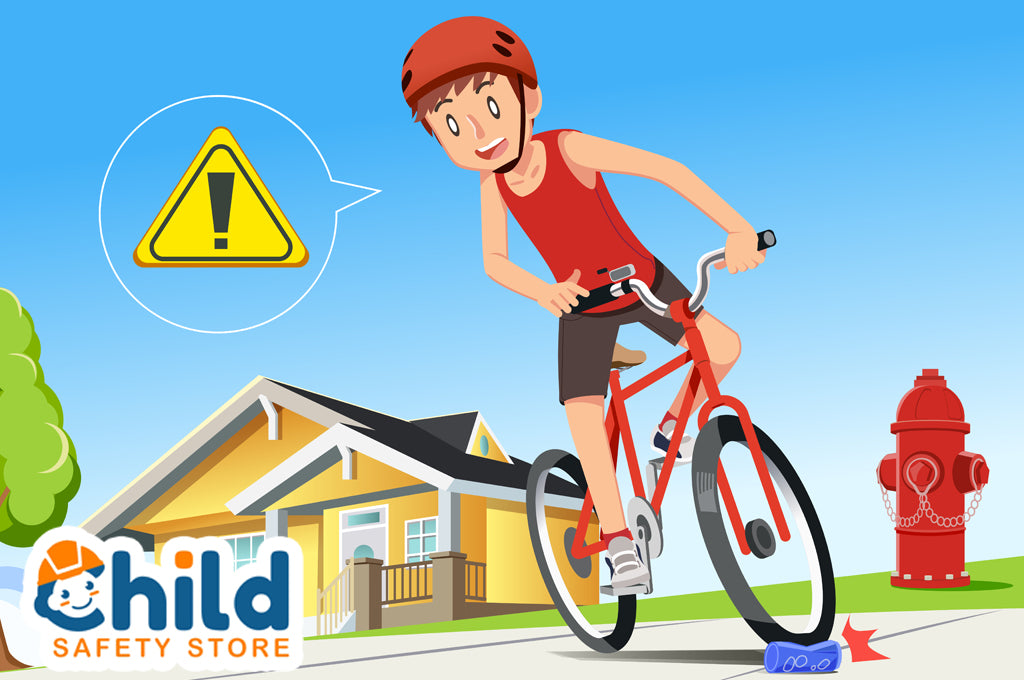
Child Safety Guide to Bike and Helmet Safety
Biking can be a very healthy habit. It provides great exercise, is good for the environment and gets kids outside for some fresh air. However, don't forget to wear a helmet! After all, biking also has some significant risks. At Child Safety Store, we want to make sure that your children avoid these risks and prevent injury with some smart, safe actions.
The number of deaths from bicycle incidents increased 28% between 2010 and 2016. These occurrences can be reduced with proper preparation and precaution. For instance, wearing a helmet can reduce brain injury by nearly 60%. Avoid emergency room visits with your child by teaching them proper protocols when it comes to bike riding and wearing a helmet.
Safety First
First, it is important to research the right bike for your child. Since bikes come in different sizes, have them do this exercise: straddle the top bar on the bike. If the bike is the correct size, their feet will be flat on the ground and there will still be 1-3 inches between them and the bar.
Next, it is vital that your child have an appropriate bike helmet that both fits properly and meets safety standards. When a helmet fits correctly, it will help to protect the head and brain in case of a fall. You can recognize a helmet that meets the Consumer Product Safety Commission (CPSC)’s safety standards because it will have a CPSC sticker. In most cases, helmets used for other sports, such as motorcycling or snowmobiling, should never be used in place of a bicycling helmet.
Prepare Properly
Wearing proper clothing while bike riding isn’t about fashion. Much more importantly, it is about safety. When your child goes biking, be sure that their clothing is conducive to this sport. For instance, consider the fact that shoes such as flip-flops can be a hazard, as one’s foot can easily slip off of the pedal. Sneakers are more appropriate – especially ones that support your ankles and close with Velcro rather than shoelaces, which can get caught in the bike’s mechanisms. In addition, wearing bright clothes will help a child to stand out on the street or sidewalk.
Before hitting the pavement, be sure that your helmet fits properly. This is essential for its effectiveness. Your child’s helmet will probably be labeled with their age group and head measurement. Use these dimensions as a guideline and then have your child try it on. The helmet should straight and should cover the forehead up to about two inches above the eyebrows. The chinstrap should be tightened until the helmet is secure. If your child is riding, this strap should absolutely always be fastened.
Bike Safely Beyond a Helmet
Set a list of bike rules for your child and go over them together. If strict rules are set, your child will know what is expected of them, and what will keep them safe. Establish with your child where they are allowed to ride, and when they are expected to return home. Here are some rules you may want to consider:
- Avoid riding in the street. If this is unavoidable, be sure to check for traffic before leaving the curb, and ride in the same direction as traffic.
- When biking with friends, ride single-file to avoid being in the middle of the road.
- Do not ride at night. If your child does ride at night or in the street, equip the bike with a reflector and horn.
- Wear a bike helmet every single time you ride.
Following these simple steps for bike riding can make the difference between a fun time and a tragic one.
